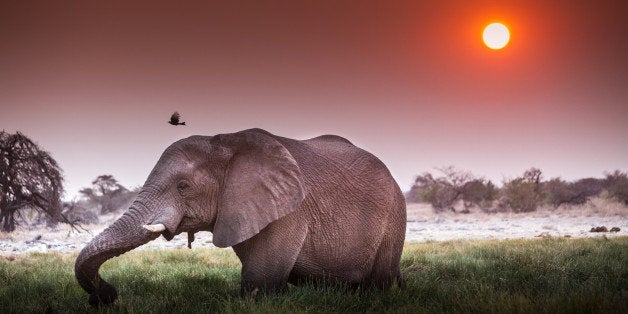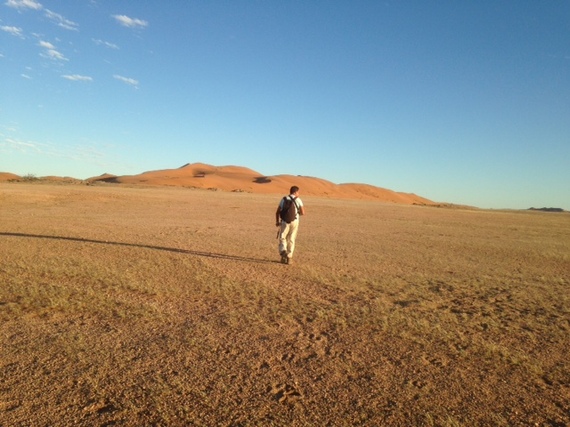
Namibia has Africa's largest game park, the world's oldest desert and the solar systems's largest meteorite -- at least of the ones we've recorded.
But the reason it deserves a spot on every traveler's bucket list is the same reason we drink fair trade coffee, buy from local farmers and forego big box stores for the independent boutique.
This little-known country on the southwestern corner of Africa has stood up to the Goliath of wildlife depletion that has severed the continent's populations of the mythic Big Five.

Here are the top five reasons every conscientious traveler should plan their next safari to Namibia:
1. This still-in-diaplers country was the first to include the protection of its natural resources in its constitution.
Take a peek at the average constitution and you'll find a long list of yawn-inducing items about governance, rights of the populace, elections and other human-centric concerns. Namibia chose to grant equal protection to its wildlife, its vast landscapes and its natural resources, a stunning move since copied by other African nations.
2. Namibia has become a poster child for what's possible in wildlife conservation.
Until the Namibian Constitution went into effect on March 21, 1990, Namibia's wildlife, like everywhere else on the planet, was nosediving at a drastic clip. Its wily government took a long hard look at its resources, realized that lions, elephants, rhinos, leopards and buffalo, could lure travelers with deep pockets to its shores.
With much of the country averaging less than 50 millimeters of rainfall per year, farming -- despite all the seeds and Peace Corp workers -- was simply unable to provide a long-term solution. But capitalizing on the resources it already had (animals that residents of already-developed lands will pay good money to see), Namibia chose to build an economy by convincing its residents to embrace five simple words: "We will live with wildlife."
3. Namibia's entire 976-mile coastline is protected.
In fact, nearly half the country, more than twice the land mass of the UK, is under conservation. At last count, there were 70 communal conservancies, self-governing entities that proudly manage a wide range of wildlife and consequently benefit from tourist lodges.
"It's one of the few countries in the world where the whole country is involved in conservation," says Jim Sano, vice president of travel, tourism and conservation for the World Wildlife Fund.
4. It has the world's largest free-roaming population of black rhino.
Namibia boasts a growing population of both black and white rhino, all of which are technically "owned" by the state. Recent counts estimate Namibia's population of the South Western black rhino, a nearly-identical cousin of the extinct Western, at nearly 1800, a huge jump from 1992 when rhino population were nearly decimated thanks to Chinese herbalists' claims that ground rhino horn revive patients in comas, bring down fevers and aid in sexual stamina and fertility.
Namibia's black rhinos, the world's largest remaining population, are rigidly protected in Etosha National Park, Waterberg Plateau Park and in the communal conservancies. They're faring so well, in fact, that Namibia has been able to export a few to other countries' national parks. It also claims the largest remaining population of cheetahs.
5. Poaching is socially unacceptable.
By some estimates, an elephant is slaughtered in Africa every 15 minutes. And while rhinos (probably because they're harder to find since nearly going extinct in 1980) make it for nine hours, poaching is still a major problem. Except in Namibia, where lions, leopards and giraffes, as well as elephants and rhinos are on the upsurge.
